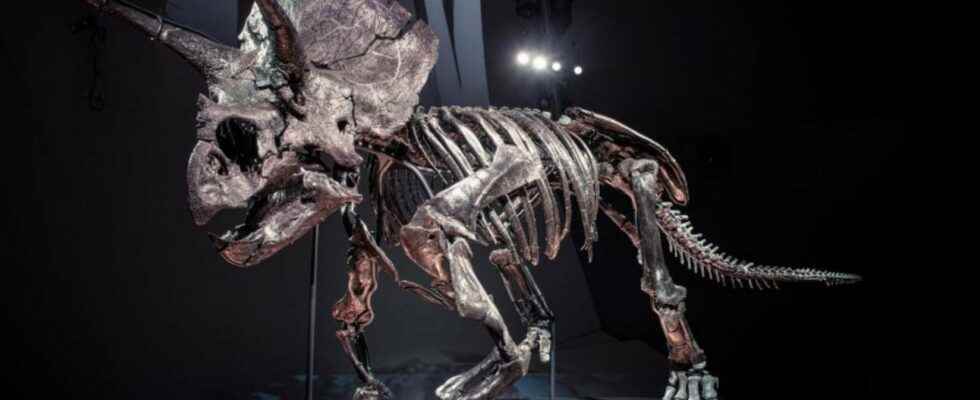This fossil of Triceratops dating from the end of the Cretaceous is the most complete in the world. Its skull weighing more than 200 kg, its vertebral column, its limbs and the marks of its tendons will make it possible to better understand the ecology of this extinct giant.
You will also be interested
[EN VIDÉO] Interview: three exceptional dinosaurs Dinosaurs are amazing creatures by their nature, their abilities or their size. They know no equivalent in the current animal world. Futura-Sciences interviewed Éric Buffetaut, paleontologist, to tell us about the most surprising dinosaurs.
67 million years ago, at the end of the Cretaceous, a specimen of Triceratops horrible died in Montana, probably near a river or in a stream bed. The rapid burial of this dinosaur preserved it until 2014, when it was discovered under 3.5 meters of sandstone. Its excavation required more than a year of work for the cleaning and preparation of huge blocks of rock; transporting it to the Melbourne Museum required crates sometimes measuring the size of a car.
One Triceratops 85% complete
The fossil individual was named “Horridus”, after the name of the species and it is the most complete of the kind Triceratops known to date. The skeleton is indeed 85% complete, it includes more than 260 bones and weighs more than a ton, of which more than 260 kg of skull. The preservation of the skeleton is so exceptional that impressions of skin and tendons are visible on certain bones. The sex of the individual could not be determined but estimates indicate thathorror almost measured seven meters long and two meters high. The giant fossil was acquired by the Museum in Melbourne, Australia, and has been on display there since March this year. Waiting to face T. horridus in Australia it is possible to see the 3D specimen skeleton on the museum website.
Triceratops was as tall as a Melbourne tram: 2m high, 8m long. Artist representation. © Raoul Ramos, Melbourne museum
This fossil is the Rosetta Stone for understanding Triceratops. © Melbournemuseum
Interested in what you just read?

